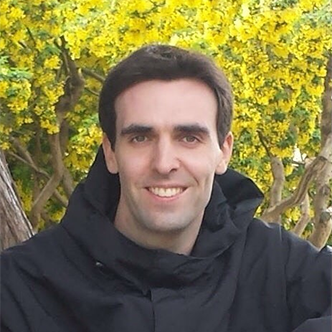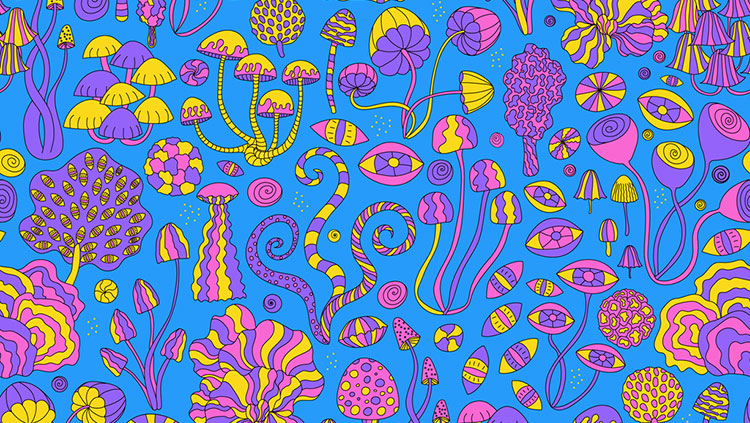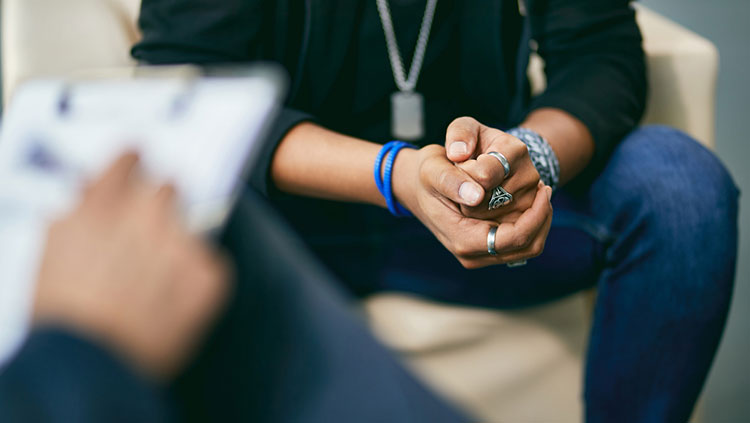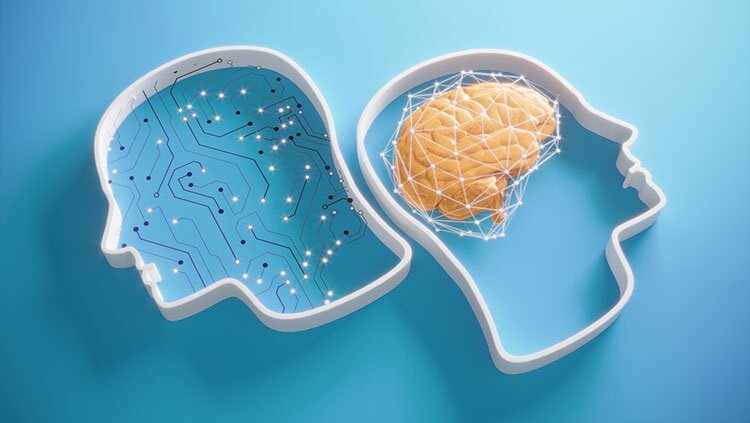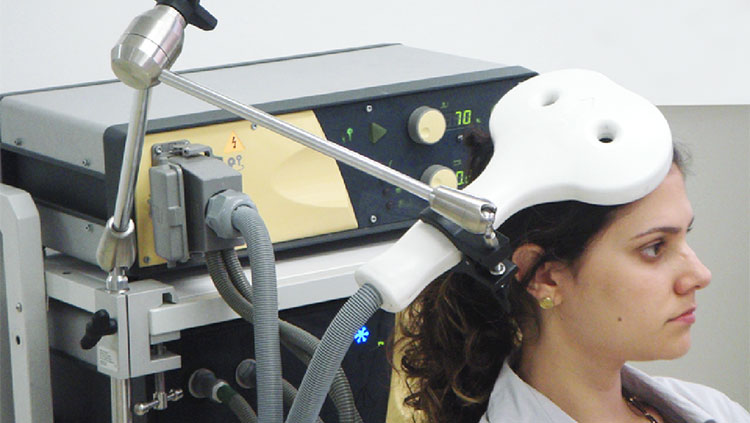Zapping the Vagus Nerve Helps Stroke Patients Recover Movement
- Published5 May 2021
- Author Charlie Wood
- Source BrainFacts/SfN
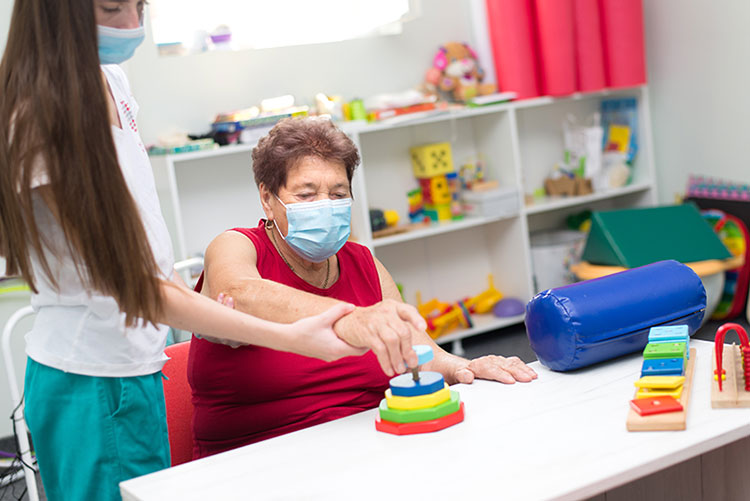
The human brain is ravenous. Each minute, it drains the oxygen from a wine bottle’s worth of blood. When any stretch of the intricate mesh of blood vessels that slake the brain’s thirst becomes blocked or breaks down, nearby neural tissue suffocates – commonly known as a stroke. Strokes often destroy the machinery that turns thoughts into actions, leaving people unable to walk, button a shirt, or pick up a coffee mug.
The bread-and-butter approach to motor recovery is simple: practice. Under the guidance of physical therapists, patients repeat simple movements, such as grasping a ball or turning a handle, over and over. These repetitions rebuild and reinforce connections in the brain’s motor cortex, helping the practitioner become more skilled. Gabriela Cantarero, a neuroscientist at Johns Hopkins Medicine and fan of the computer game Oregon Trail, likens the process to settlers’ wagons smoothing out new roads through repeated use.
“The first few times it’s kind of rocky,” she says. “Then, as you’re reinforcing the neural pathway, the grooves become easier. Pathways become easier to activate.”
Now, neuroscientists want to push this recovery even further – to ‘weight the wagon,’ so to speak – by zapping a major nerve with electricity. Most stroke patients reach a plateau in their recovery, often falling around 30% short of their original capabilities. In conjunction with physical therapy, a technique called vagus nerve stimulation could help them regain more movement.
Forging New Paths
The vagus nerve is not an obvious target for motor recovery. Running from the brain to the abdomen, the tract of nerve fibers controls vital functions like heart rate, breathing, and digestion. The first indications that vagus nerve stimulation, or VNS, could help reorganize the brain came from a study in rats in 2011. The rats suffered from a ringing in the ears, or tinnitus, that prevented them from hearing tones of a particular frequency. When researchers played these tones to signal that a blast of noise was coming, the rats didn’t react. But by pairing audible tones with mild jolts to the vagus nerve, the researchers coaxed the animals’ brains to adapt to the ringing. They started picking up on the warning tones.
The researchers, led by Michael Kilgard, were excited to have discovered a way to encourage neural flexibility. “When we saw it was therapeutic in the rats, we said, ‘well, what could we try next?’” says Kilgard, a neuroscientist at the University of Texas at Dallas.
A decade later, Kilgard is exploring vagus nerve stimulation for stroke recovery. He and his collaborators have created a device that lightly zaps the vagus nerve while a patient trains a stroke-impaired arm. The device is about half the size of a smartphone and is surgically implanted under the collarbone. The vagus nerve helps the brain keep track of your breathing and heart rate, so an unexpected electric signal makes it perk up. “We predicted that brief bursts of stimulation could improve recovery from stroke by enhancing plasticity,” Kilgard says.
And when you’re trying to relearn a movement, plasticity is good. During VNS the brain releases acetylcholine and norepinephrine, two chemical messengers known to enhance new connections. When the device stimulates the nerve just as a patient twists a knob or lifts a weight, the motor cortex can better forge and strengthen the pathways for those movements.
Smoothing the Way
VNS is not a silver bullet. It works only combined with intense physical therapy, and even then, recoveries are far from complete. But for many patients, nerve stimulation appears to help them regain more motion than physical therapy alone.
In recent years, small pilot studies have shown encouraging results. A 2016 trial with 20 patients doing physical therapy alone improved by about three points on a 66-point scale of motor recovery. Those who also received VNS during therapy improved by two to three times that amount. A 17-patient trial in 2018 showed similar results.
Jesse Dawson, a professor of stroke medicine at the University of Glasgow and a collaborator of Kilgard’s, recently oversaw a phase three trial of the therapy. In it, more than 100 patients who had experienced a stroke about three years earlier were randomly assigned to VNS or placebo stimulation. After six weeks of clinical therapy and three months of home exercises, nearly half of the VNS patients showed clinically meaningful signs of improvement, compared with a quarter of placebo patients. Hand and arm function improved two to three times more in the VNS group than in people who didn’t get the zaps.
The researchers expect the device to receive FDA approval this summer, and hope that the therapy’s success will spur further research into alternative ‘wagon weights’ to make the brain more malleable.
“We just need one,” Dawson says. “That will be a real pivotal moment in moving things forward.”
CONTENT PROVIDED BY
BrainFacts/SfN
References
Dawson, J., Liu, C. Y., Francisco, G. E., Cramer, S. C., Wolf, S. L., Dixit, A., Alexander, J., Ali, R., Brown, B. L., Feng, W., DeMark, L., Hochberg, L. R., Kautz, S. A., Majid, A., O’Dell, M. W., Pierce, D., Prudente, C. N., Redgrave, J., Turner, D. L., … Kimberley, T. J. (2021). Vagus nerve stimulation paired with rehabilitation for upper limb motor function after ischaemic stroke (VNS-REHAB): A randomised, blinded, pivotal, device trial. The Lancet, 397(10284), 1545–1553. https://doi.org/10.1016/S0140-6736(21)00475-X
Dawson, J., Pierce, D., Dixit, A., Teresa J., K., Robertson, M., Tarver, B., Omar Hilmi, John McLean, Kirsten Forbes, Michael P. Kilgard, Robert L. Rennaker, Steven C. Cramer, Matthew Walters, & Navzer Engineer. (2016). Safety, Feasibility, and Efficacy of Vagus Nerve Stimulation Paired With Upper-Limb Rehabilitation After Ischemic Stroke. Stroke, 47(1), 143–150. https://doi.org/10.1161/STROKEAHA.115.010477
Engineer, N. D., Kimberley, T. J., Prudente, C. N., Dawson, J., Tarver, W. B., & Hays, S. A. (2019). Targeted Vagus Nerve Stimulation for Rehabilitation After Stroke. Frontiers in Neuroscience, 13, 280. https://doi.org/10.3389/fnins.2019.00280
Engineer, N. D., Riley, J. R., Seale, J. D., Vrana, W. A., Shetake, J. A., Sudanagunta, S. P., Borland, M. S., & Kilgard, M. P. (2011). Reversing pathological neural activity using targeted plasticity. Nature, 470(7332), 101–104. https://doi.org/10.1038/nature09656
Kimberley Teresa J., Pierce David, Prudente Cecília N., Francisco Gerard E., Yozbatiran Nuray, Smith Patricia, Tarver Brent, Engineer Navzer D., Alexander Dickie David, Kline Danielle K., Wigginton Jane G., Cramer Steven C., & Dawson Jesse. (2018). Vagus Nerve Stimulation Paired With Upper Limb Rehabilitation After Chronic Stroke. Stroke, 49(11), 2789–2792. https://doi.org/10.1161/STROKEAHA.118.022279


